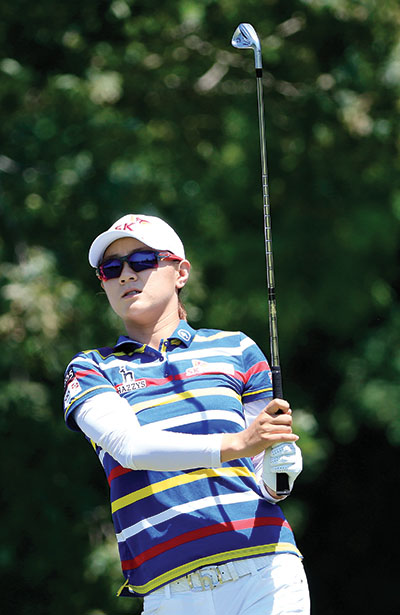This year an estimated 12,500 cases of invasive melanoma will be diagnosed in Australia, and nearly 1,500 people will die from the disease, the Melanoma Institute Australia reports. As alarming as those statistics sound – especially to a sun-drenched golfer – there is good news coming out of the US in the fight against melanoma.
If detected early – before cancerous cells infiltrate the body’s lymph nodes – the survival rate is now 98 per cent. And for those with advanced stages of the disease, the odds of survival are on the rise, too, thanks to an innovative treatment being used at the University of Texas MD Anderson Cancer Center in Houston.
Checkpoint-inhibitors immunotherapy, which involves administering a cancer-fighting drug to patients intravenously, has roughly doubled the long-term survival rate of people who have late-stage melanoma. The rate, based on follow-up studies of nearly 2,000 patients, is now 21 per cent, the uni reports. That rate is expected to improve again now that a second inhibitor drug was approved in 2014, says Dr Jeffrey Gershenwald, a professor of surgical oncology at MD Anderson. One of the mysteries of cancer is that its cells largely go undetected by the body’s natural immune system. But the new drugs have proved effective in getting the immune system to recognise the mutated cells and destroy them.
To help prevent and beat the disease, have your skin checked annually. If you have more than 100 moles on your body, you’re at greater risk. Black and brown moles that are scaly, large or asymmetrical in shape, could be melanoma.
Homemade Armour for the Sun
Golf is expensive enough, so if you don’t want to pay the additional cost of special clothing designed to block the sun’s ultraviolet rays (UPF clothing), here are some tips to get the most out of your wardrobe:
- Tech fabrics like Lycra, nylon and polyester offer more protection than cotton.
- If you buy a cotton or cotton-blend shirt, wash it multiple times before wearing so it shrinks. This reduces the space between the fibres, making it harder for the sun’s rays to get through.
- Shiny materials such as rayon do the best job of reflecting the sun’s rays, and matte materials absorb more UV radiation.
- Denser materials like corduroy are great for sun protection.

